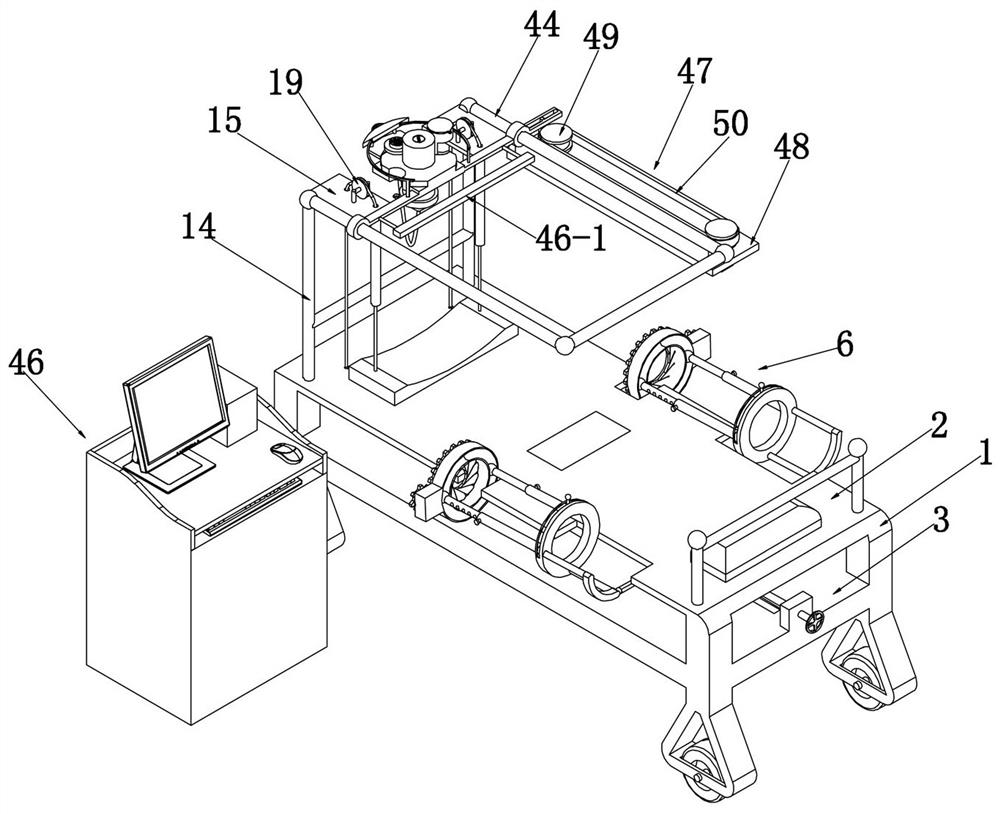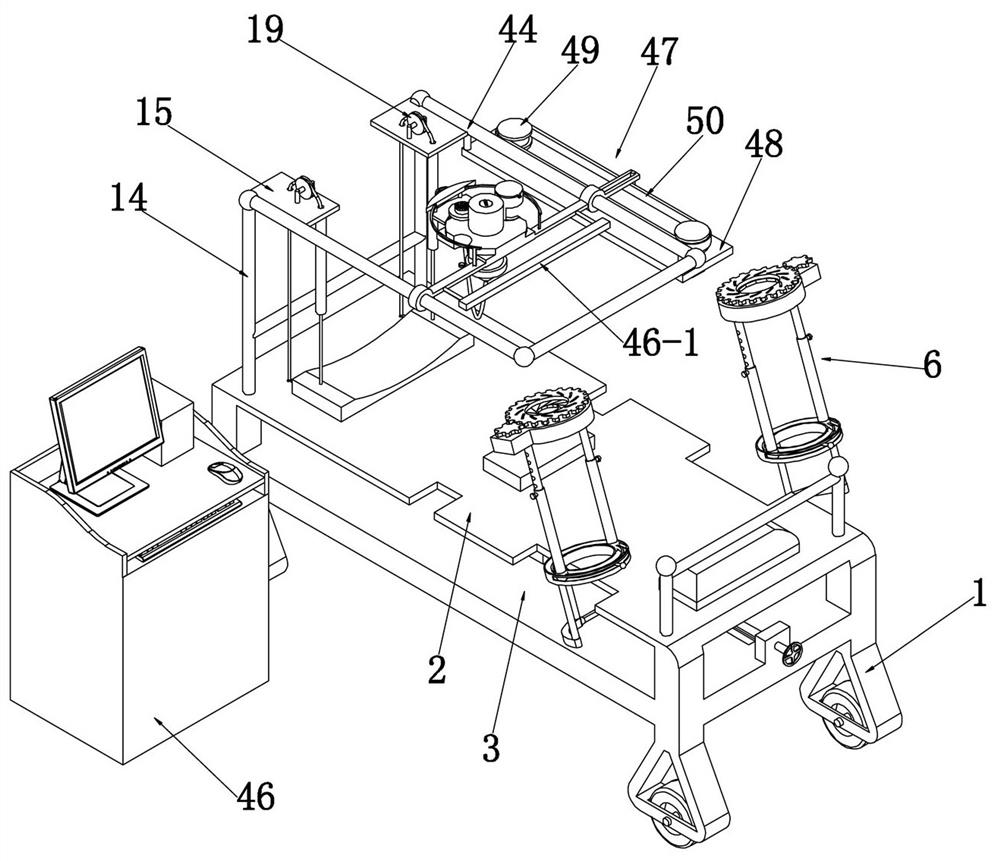An auxiliary device for detecting peripheral vascular disease
A peripheral vascular disease and auxiliary device technology, applied in the direction of organ movement/change detection, diagnostic recording/measurement, application, etc., can solve the problems of physical exertion and peripheral vascular disease for a long time, so as to reduce physical exertion and save manpower time Low cost and practical effect
- Summary
- Abstract
- Description
- Claims
- Application Information
AI Technical Summary
Problems solved by technology
Method used
Image
Examples
Embodiment 1
[0042] Embodiment 1, the present invention is an auxiliary device for detecting peripheral vascular disease, please refer to figure 1 , including a detection bed 1. When in use, the patient lies on the upper end of the detection bed 1 for detection. The detection bed 1 is provided with a bed board 2 and a storage board 3 placed at the lower end of the bed board 2. The lower end of the front end of the bed board 1 is along the left and right sides. Direction rotation is equipped with a rotating rod 4, and the rear ends of the two ends of the rotating rod 4 are fixed with arm lifting devices 6 placed on both sides of the bed board 2 through connecting rods 5. Please refer to Figure 7 , the rotating rod 4 and the arm lifting devices 6 on both sides are arranged in a "U" shape, and the lifting arm device 6 includes a circular disk 6-1 fixedly connected to the rotating rod 4 through a connecting rod 5, and the circular ring The rear end of the disk 6-1 is connected with the second...
Embodiment 2
[0045] Embodiment 2, on the basis of Embodiment 1, in order to make the legs lifted better, please refer to Figure 4 with Figure 5 The middle position of the bed board 2 is slidingly fitted with a buttock support block 20 along the vertical direction. It is an arc surface, and the lower end of the buttock support block 20 is movably placed on the upper end of the fixed moving block 21 at the rear end of the rack 10. The upper end of the moving block 21 is fixed with two semicircular projections 22, and the two projections The block 22 is able to hold the hip support block 20 as the rack 10 moves towards the rear end.
Embodiment 3
[0046] Embodiment 3, on the basis of Embodiment 1, in order to make this device suitable for patients of different sizes, please refer to figure 1 , figure 2 , Image 6 with Figure 9 , the rotating rod 4 is set to be telescopic, and the rotating rod 4 includes the main rotating rod 23 in the middle position and the auxiliary rotating rod 24 that is slidingly fitted on both sides. The rotating rods 24 are all set to a rectangle, and the purpose of being arranged as a rectangle is to realize the telescopic effect, and when the main rotating rod 23 rotates, it can also realize the synchronous rotation of the driving auxiliary rotating rod 24, and the auxiliary rotating rod 24 is placed on the The end of the main rotating rod 23 internal slideway is fixedly connected with the end of the main rotating rod 23 internal slideway by a spring 25;
[0047] The telescopic rod 7 includes a first telescopic rod 26 connected to the annular disk 6-1, and a second telescopic rod 27 connec...
PUM
 Login to View More
Login to View More Abstract
Description
Claims
Application Information
 Login to View More
Login to View More - R&D
- Intellectual Property
- Life Sciences
- Materials
- Tech Scout
- Unparalleled Data Quality
- Higher Quality Content
- 60% Fewer Hallucinations
Browse by: Latest US Patents, China's latest patents, Technical Efficacy Thesaurus, Application Domain, Technology Topic, Popular Technical Reports.
© 2025 PatSnap. All rights reserved.Legal|Privacy policy|Modern Slavery Act Transparency Statement|Sitemap|About US| Contact US: help@patsnap.com



